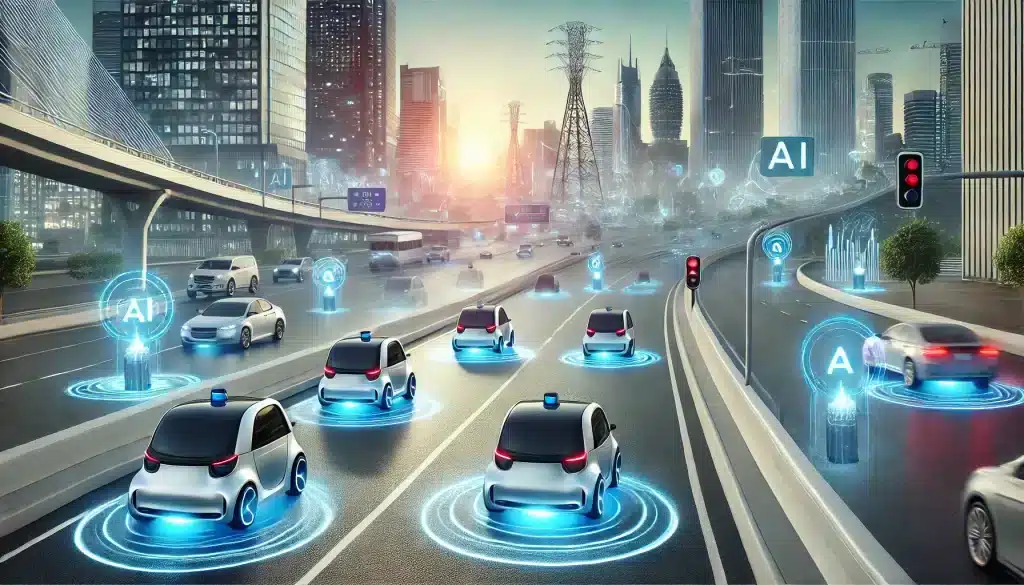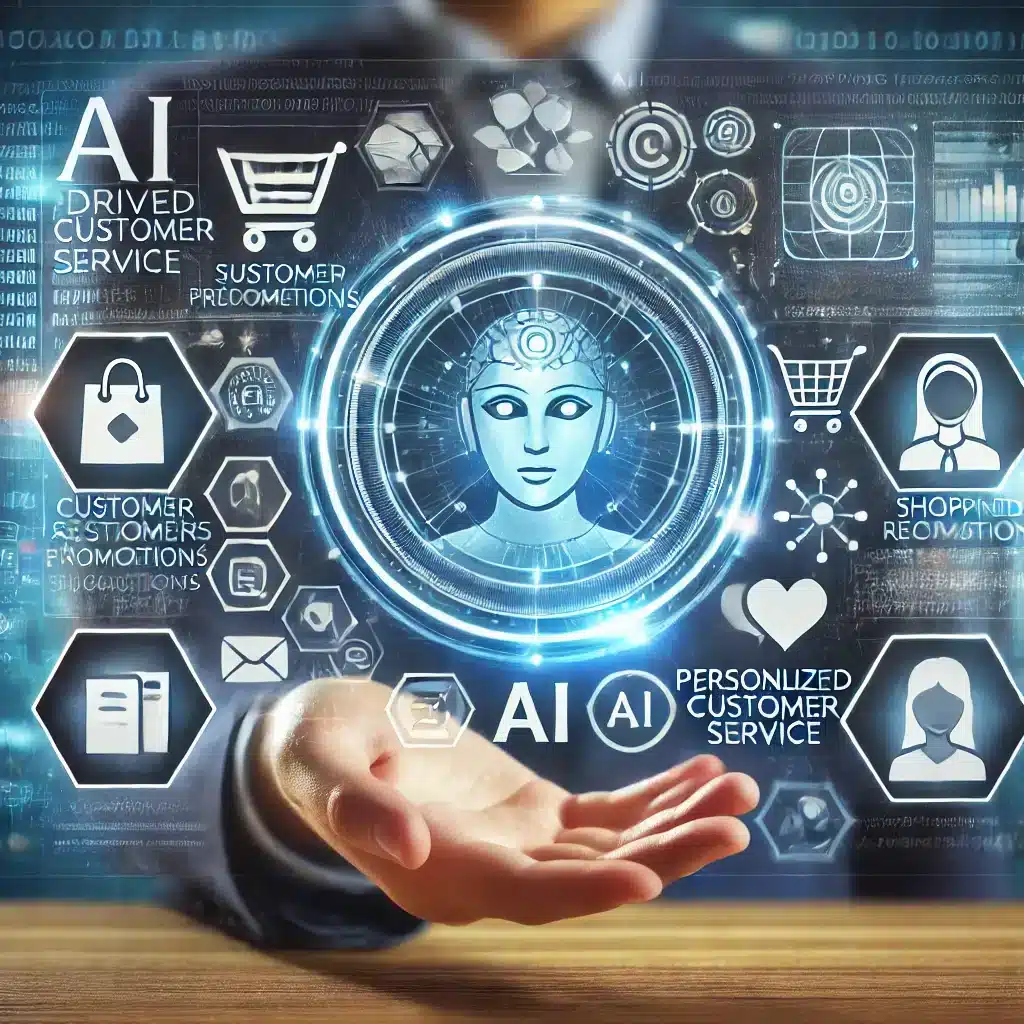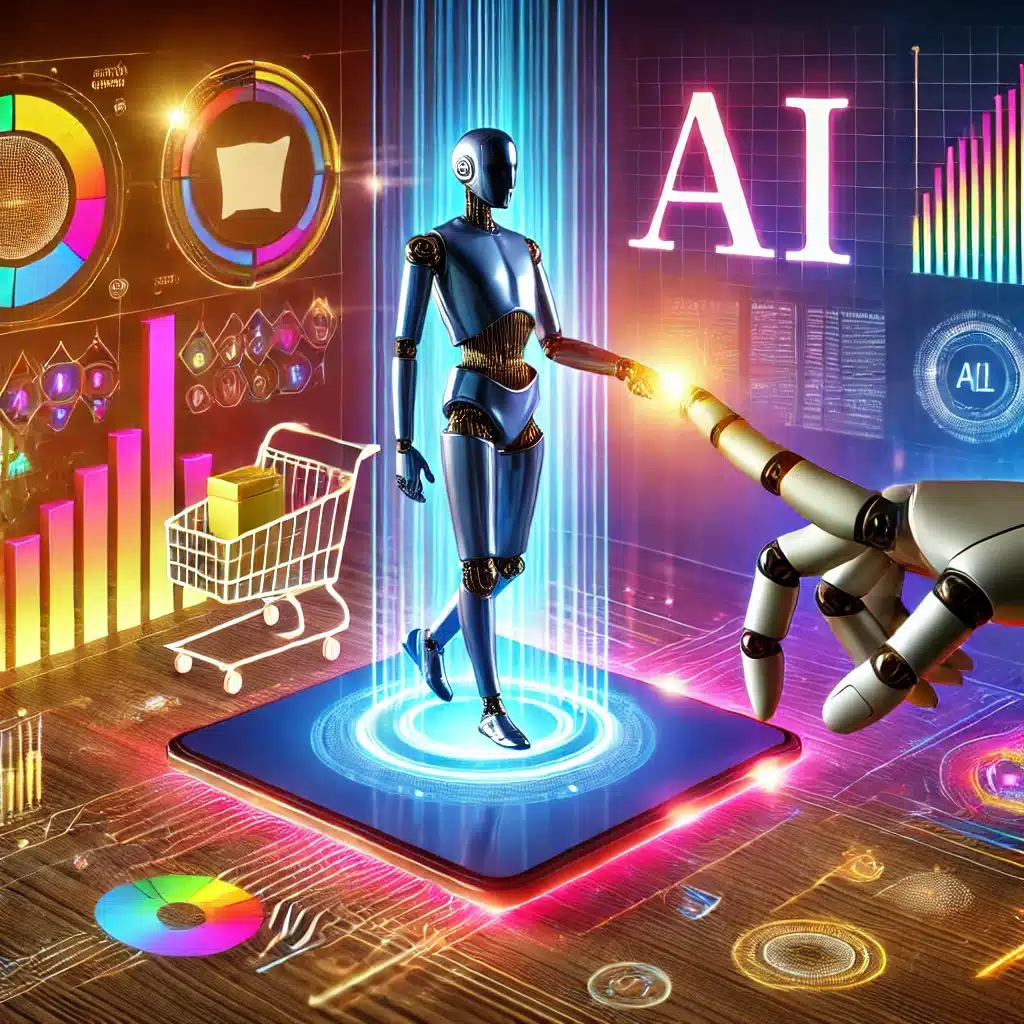Introduction
The future of AI in transportation is a bright and revolutionary field. As technology progresses, AI can revolutionize the way people travel from one place to another. Whether it is self-driving cars, AI-based traffic management systems, or intelligent logistics solutions, the possibilities seem endless. But along with this transition to a future dominated by AI come challenges of its own. Such issues include technical limitations, cybersecurity risks, and ethical and regulatory implications of such wide-scale changes. In this article, we discuss the benefits and challenges of AI in transportation, recent developments, and expert opinions to understand how this technology is shaping the future of mobility.

Benefits of AI in Transportation
AI integration in transportation has already begun to bring about so much, and great benefits are expected. From safety to sustainability, AI will transform transportation systems in unprecedented ways.
Enhanced Safety
AI can greatly enhance road safety. The main cause of car accidents in America is human error, but AI-based technologies could eliminate or reduce such errors. For instance:
- Autonomous Vehicles (Self-driving Cars): AI lies at the heart of self-driving technology wherein it utilizes sensors, cameras, and algorithms using machine learning to make decisions in real time that decrease the rate of human error. This technology can immensely reduce injurious and fatal casualty accidents caused by traffic.
- Advanced Driver Assistance Systems (ADAS): ADAS technologies with AI include features like lane-keeping assistance, automatic emergency braking, adaptive cruise control, and collision avoidance systems. These tools assist drivers in avoiding accidents and improve safety generally on the road.
AI can create smarter transportation systems that are more efficient as well as safer.
Improved Efficiency
AI plays a critical role in optimizing the flow of traffic and enhancing transportation efficiency. Key benefits include:
- Smart Traffic Management: AI can optimize traffic signals based on real-time data, such as vehicle flow and pedestrian movement. This reduces congestion and helps maintain a steady traffic flow, leading to smoother commutes and less time spent idling in traffic.
- Route Optimization: Navigation systems from Google Maps and Waze leverage machine learning to analyze patterns in traffic to provide an efficient route. These products consider factors such as real-time traffic, construction zones, and accidents to guide the driver and avoid congestion or delays while saving on fuel.
- Fleet Management: AI for logistics companies can optimize delivery routes, manage fleet schedules, and even reduce fuel consumption for faster deliveries and cost savings.
In these ways, AI helps make transportation more efficient, reducing both travel time and costs while improving overall productivity.
Environmental Sustainability
The sustainability of the transportation industry is a critical concern, and AI can help reduce the impact of transportation on the environment. With AI technologies, we can reduce emissions and energy consumption by a considerable margin.
- Electric Vehicles: AI can improve electric vehicle performance by optimizing charge schedules and battery life. An AI-powered system could predict the optimal times when a vehicle would require charging so that it was always available for use, thereby maximizing the life of the batteries.
- Route Optimization for Reduced Fuel: The computation of the most fuel-efficient routes by AI is also one way to reduce emissions. This is because AI minimizes idle time in traffic and routes that are not fuel-friendly. Therefore, AI reduces carbon emissions.
- Eco-Friendly Infrastructure: AI can help develop smart infrastructure that promotes energy-efficient transportation, for example, AI-powered traffic lights that adjust based on real-time traffic flow to avoid unnecessary stops or charging stations strategically placed based on traffic data.
AI can make transport more eco-friendly by promoting electric vehicles and reducing the carbon footprint associated with travel.
Challenges of AI in Transportation
Technical Issues
Despite the benefits, technical challenges exist. For instance, a recent issue with Waymo robotaxis in San Francisco highlighted the importance of reliable software updates. The mystery of midnight honking in a parking lot disrupted residents until the company updated its software.
Some of the other technical challenges are:
- Data Accuracy: AI heavily banks on data to make decision-making. If the sensors or cameras collect inaccurate and incomplete data, then faulty decision-making can be expected, most of the time in vital situations.
- AI Training: AI systems have to be trained on massive amounts of data to perform accurately. However, if the training data does not take into account all possible scenarios, for example, different weather conditions, and unusual road situations, the AI system will not perform optimally in the real world.
- Hardware Limitations: Some of the AI systems need specific hardware, which costs money and is not widespread. Ensuring that a supporting hardware infrastructure is also there for the AI system is required.
Overcoming these technological challenges is important to the assurance of reliability and safety in AI transportation.
Cybersecurity Risks
Additionally, AI systems are vulnerable to cyberattacks. A report by BNR discusses the increasing threat of cyberattacks targeting digitalized sectors like transportation. Protecting AI systems from such attacks is crucial to maintaining safety and trust.
- Data Breaches: AI in transportation often uses large amounts of data, such as passenger information and vehicle telemetry. A breach of this data could lead to identity theft or exploitation.
- Disruption of Traffic Systems: Cyberattacks could target AI-driven traffic management systems, leading to widespread traffic disruptions or accidents.
To counter these cybersecurity risks, there must be the implementation of strong security protocols, including encryption, regular updates, and advanced authentication mechanisms.
Ethical and Regulatory Issues
The rise of AI in transportation also brings up many ethical and regulatory concerns. Among the most significant are the following:
- Job Displacement: With the advent of AI technology that automates tasks, the possibility of job displacement exists in sectors such as transportation, logistics, and driving. A shift to autonomous vehicles might reduce the demand for jobs requiring traditional driving skills, causing unemployment in the sector.
- AI Decisions in Crisis Situations: In some situations, AI may have to decide on the go, for instance, how to avoid an impending collision. The problem arises when it is unknown which human life AI should consider superior in such a situation.
- Regulation of AI: Governments and regulation bodies need to put well-defined and effective policies regulating AI in transportation. Safety standards, ethical concerns, and liability issues related to vehicles and infrastructure with AI-driven vehicles should be considered.
Conclusion
AI in transportation has a huge potential to revolutionize how we move and manage transportation systems. From enhancing safety and efficiency to promoting environmental sustainability, the benefits of AI are undeniable. However, there are significant challenges that need to be addressed, including technical issues, cybersecurity risks, and ethical concerns. Staying ahead in the evolution of AI is important so that governments, tech companies, and eventually the public can collaborate to solve and unlock the opportunities coming with it from the transport sector.
FAQs
Q1: How is AI improving safety in transportation?
A1: AI enhances safety by minimizing human error which is the leading cause of accidents. For example, autonomous vehicles utilize AI for real-time decisions that avoid crashes. Moreover, AI-based driver assistance systems, such as lane-keeping and collision avoidance, increase safety in driving.
Q2: What are the most significant challenges in AI within transportation?
A2: The main challenges include technical issues such as data accuracy and hardware limitations, cybersecurity risks such as hacking and data breaches, and ethical concerns like job displacement and decision-making in critical situations.
Q3: How does AI contribute to environmental sustainability in transportation?
A3: AI helps reduce environmental impact by optimizing fuel consumption, promoting the use of electric vehicles, and minimizing traffic congestion, which reduces carbon emissions.
Q4: What is the role of cybersecurity in AI transportation systems?
A4: Cybersecurity plays an important role in protecting AI systems in transportation against hacking, data breaches, and disruptions. It is very important to have robust security protocols to maintain safety and trust in AI technologies.
Q5: What are the ethical concerns related to AI in transportation?
A5: Some ethical concerns include job displacement due to automation, biased decision-making of AI in critical situations, and clarity in regulations regarding the use of AI in transportation.



